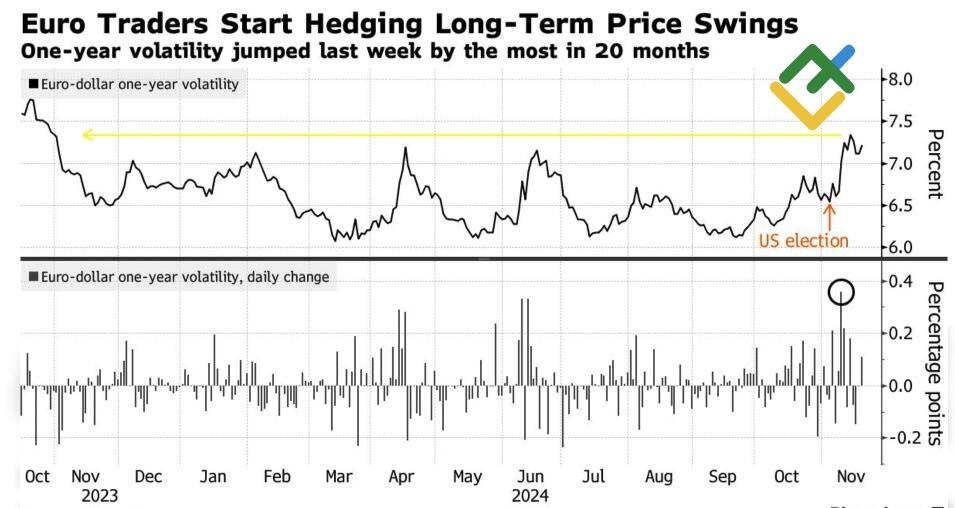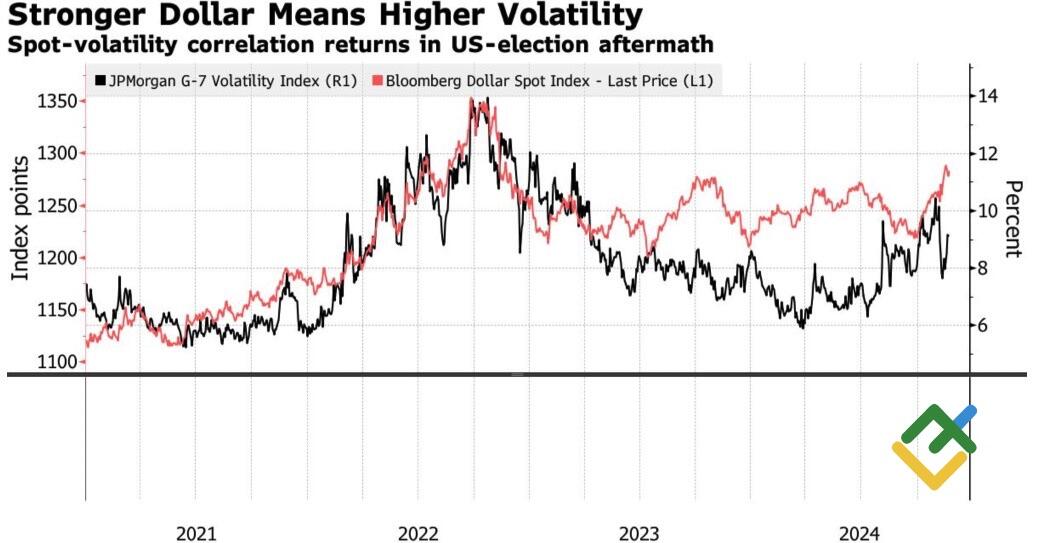
Donald Trump’s selection of nominees for his administration suggests that the proposed tariffs on trade will not be as significant as previously indicated by the President-elect. Will a more measured approach to protectionism lead to a rebound in the EURUSD exchange rate? Let’s discuss this topic and make a trading plan.
The article covers the following subjects:
Major Takeaways
- The stock market bets on less US protectionism.
- The Forex market fears trade wars.
- The divergence in economic growth and monetary policy will intensify.
- The EURUSD pair continues to plummet to 1.035.
Weekly US Dollar Fundamental Forecast
The fiscal stimulus and trade duties proposed by Donald Trump form the basis of his economic policies. However, these two objectives are mutually exclusive. Tax cuts spur the economy and inflation, strengthening the US dollar and increasing imports by boosting domestic demand. The tariffs will reduce consumer spending, which in turn will slow GDP growth. The markets are questioning which approach the Republican Party will favor. The market is anticipating the new US president’s policies, which are driving the EURUSD pair toward parity.
The Trump trade has gained momentum as geopolitical concerns have receded. In light of the appointments to his team, it seems that trade duties will not be as significant as initially proposed. The new officials are more inclined to use a firm approach than a conciliatory one, demonstrating a willingness to negotiate to achieve mutually beneficial outcomes. Furthermore, given that a trade war did not begin during Donald Trump’s previous term as expected, US stock indices can now focus on the positive aspects of his presidency, namely fiscal stimulus and deregulation.
However, the rise in foreign exchange volatility and the rapid decline of major global currencies against the US dollar suggest that the currency market is taking Donald Trump’s statements regarding 60% tariffs against China and 10-20% tariffs against other countries seriously.
EURUSD Volatility
Source: Bloomberg.
Following several years of stability resulting from coordinated monetary policies of central banks spearheaded by the Federal Reserve, the Forex market is poised to face a period of turbulence. Market sentiment is characterized by a prevailing sense of uncertainty emanating from a range of factors, including the policies of the new US administration and Donald Trump’s social media posts, which influenced investor sentiment between 2017 and 2020.
USD Index Performance and G7 Volatility Index
Source: Bloomberg.
The consensus among central banks is poised to shift as the America First slogan paves the way for divergence in monetary policies. In the US, there is a risk of accelerating inflation due to fiscal stimulus, anti-immigration policies, and deregulation. Other countries will experience slower economic growth and inflation as a result of trade tariffs. Consequently, the Fed will slowly reduce interest rates and may even pause its monetary expansion cycle. In contrast, other regulators, including the European Central Bank, will attempt to loosen monetary policy as quickly as possible.
The market is anticipating a discrepancy in the pace of policy adjustments and is selling the EURUSD pair. However, if the anticipated negative impact of protectionist policies proves less severe than expected, the rapid selling of the major currency pair may lead to a significant rebound.
Weekly EURUSD Trading Plan
In light of the forthcoming inauguration of Donald Trump as US President, the EURUSD pair is exhibiting negative sentiment due to discrepancies in economic growth and monetary policy. This is likely to push the euro towards 1.035. As for now, traders should keep their short positions open and initiate more short trades over time.
Price chart of EURUSD in real time mode
The content of this article reflects the author’s opinion and does not necessarily reflect the official position of LiteFinance. The material published on this page is provided for informational purposes only and should not be considered as the provision of investment advice for the purposes of Directive 2004/39/EC.
{{value}} ( {{count}} {{title}} )
This post is originally published on LITEFINANCE.





